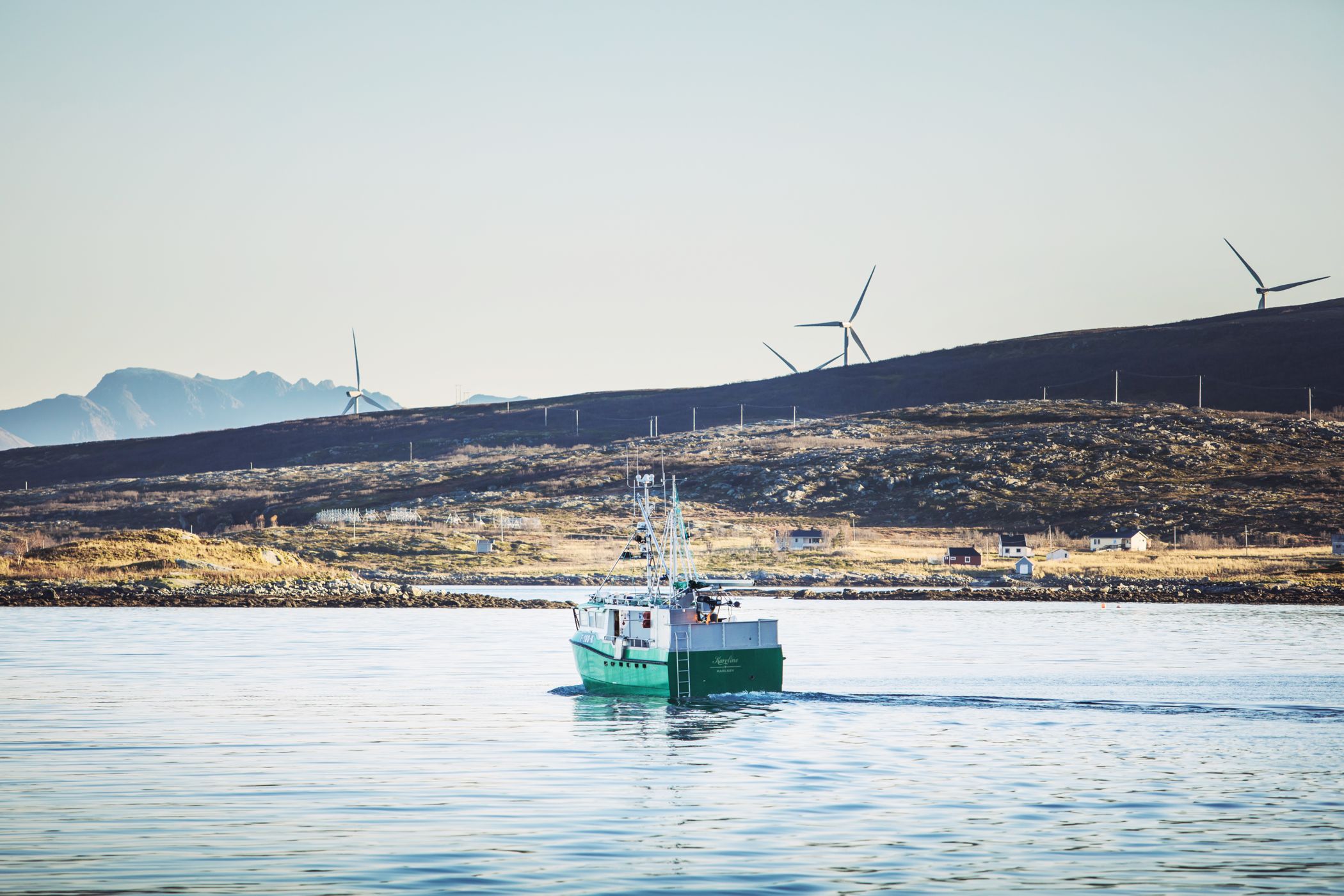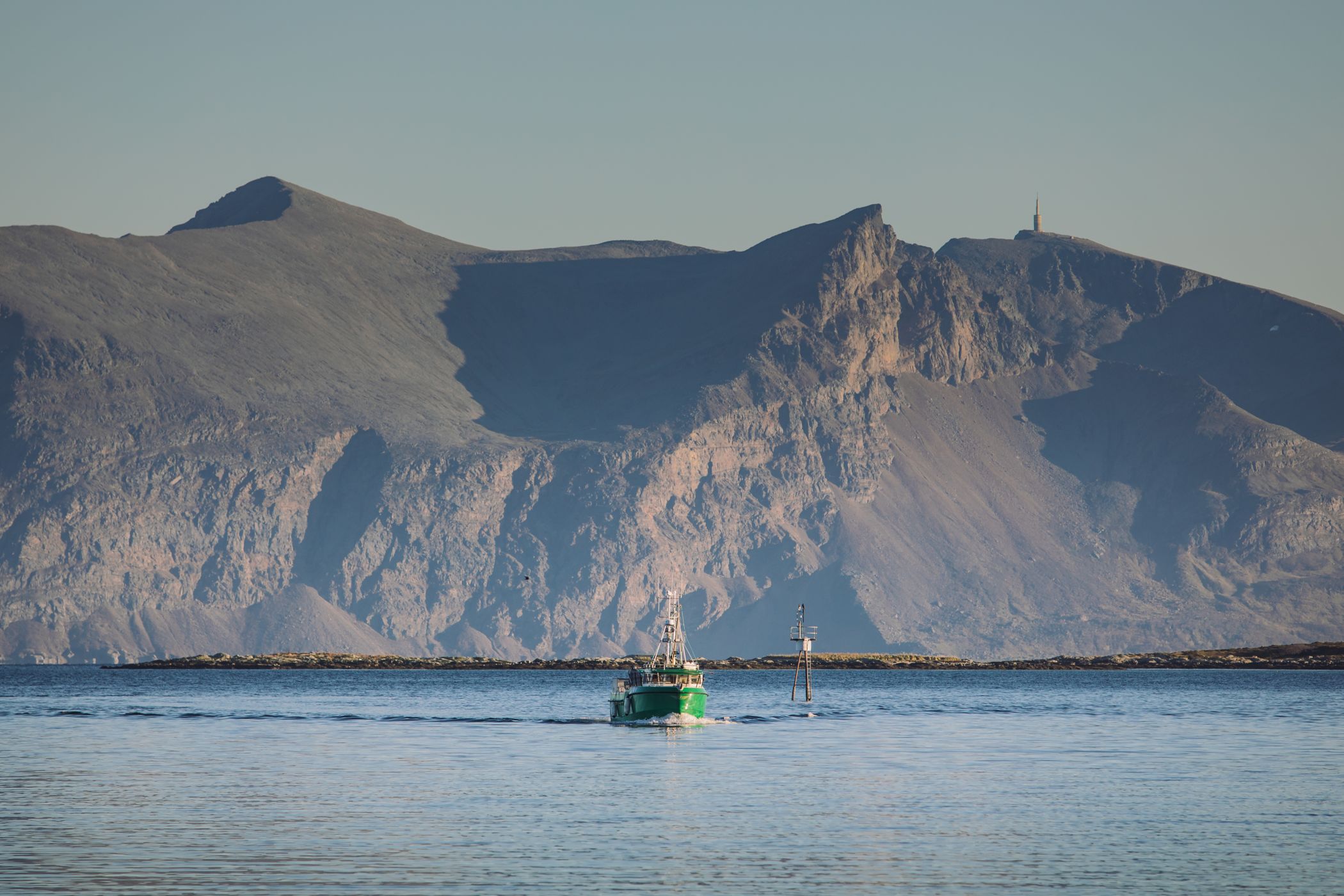Electric fishing vessel
Like a Tesla on the sea – Bent Gabrielsen captains Norway’s first electric fishing boat.
- Right now, it’s a stiff breeze ... Pretty fresh!
- Have you caught anything?
- A few pollock and redfish. Not much...
Fisherman Bent Gabrielsen reports on the day’s catch from Nordfugløya north of Tromsø. Little differentiates him from other fishermen, except the boat – Bent is the skipper of Norway’s only electric fishing boat.
“I sail diesel-electric hybrid at sea for a couple of hours, then I draw the net fully electric. Once the catch is onboard, I have a voyage home of around two and a half hours, during which I use the rest of the battery pack in combination with diesel.”

The electric vessel ‘Karoline’ has run on electricity for the past two years. Photo: Marius Fiskum
Perfect collaboration
The electrification of Norway is in full swing. Electric cars and bikes buzz around the cities, and cutting through the fjords are electric ferries, such as the Siemens project ‘MS Ampere’.
Many fishermen have been sceptical of the newcomer, but now Bent Gabrielsen and his electric fishing vessel ‘Karoline’ have fished the waters without problems for almost two years.
“I had actually expected more startup issues with the boat, after all it’s a pilot project, but overall the whole experience is positive.”
When the catch of the day has been landed, Gabrielsen plugs the boat into the electrical socket and travels home. ‘Karoline’ has a 195-kWh battery pack, about the same as two well-equipped Teslas. The whole thing is also connected to the Cloud...

Knut Lønskog is a security specialist and expert at MindSphere at Siemens. Photo: Siemens
The entire electrical part of the boat is provided by Siemens, which also extracts a lot of data from the vessel through the Cloud-based solution, MindSphere.
“MindSphere makes all sensory data from the boat available in the Cloud. This gives us a real-time status for the onboard equipment, and great opportunities to optimise the operation of the boat,” says Knut Lønskog, Security Specialist and Expert on MindSphere at Siemens.
Following the most recent update from Siemens, Gabrielsen has gained more motor power.
“Now I do eight knots! The changes in the software have also made the vessel easier to operate,” he says.
Incentives needed
“Now that we have reached some milestones with electric cars, we can do the same with boats.”
Gabrielsen, however, doesn’t believe that electric boats will catch on without a heavy push from the authorities.
“You need some ‘carrots’ and proper economic incentives to kick-start development. For instance, if the electric boats get a quota bonus of 50 percent – then something will happen!
Gabrielsen doesn’t believe the environmental aspect alone is enough to encourage people in the trade to switch to electrical operation.
“It’s the economic aspects in this that will attract people. As a business owner, it’s imperative to have a business philosophy, anything else would be irresponsible,” says Bent.
Noise-free sailing
“I have received a lot of attention for the boat. There was a good portion of scepticism in the beginning, which I am the last to hear about,” Gabrielsen says with a laugh.
Siemens is a driving force behind the electrification of maritime vessels in Norway. Now, the industrial group is in the final stages of an investment in the range of hundreds of millions of NOK at the company’s plant in Trondheim. And from 2018, Siemens will manufacture its own batteries here for use in similar deliveries.
On board the ‘Karoline’, Bent controls all operations from four touch screens. All equipment on deck is powered by an electric hydraulic pump, making everyday life virtually noise-free.
“The working environment is much better here than on a traditional boat. It’s completely quiet. It’s wonderful,” says Gabrielsen.
Lønskog explains that Siemens has delivered more than 30 million automation systems worldwide, and all of these, whether a silo, pump, water purifier, or an electric bus, can now be linked directly to MindSphere.
“The linkup is seamless and cost-effective,” says Lønskog.

Greater profitability
A feasibility study conducted by Siemens in cooperation with Bellona shows that electrification of the coastal fishing fleet offers increased efficiency, better working environment, reduced fuel costs and reduced maintenance. All in all, increased profitability for the fishermen.
In addition to less noise and faster response, Gabrielsen’s way of operating the vessel has also changed.
“I have become much more aware of the consumption, as I constantly note how much is used. I can see how many kilowatts that go right to the propeller, so I’m naturally more aware of it.”
“Skippers have always been preoccupied with consumption, but it all becomes much more visual when you receive constant information on-screen.”